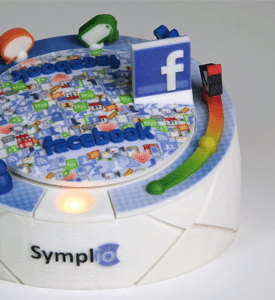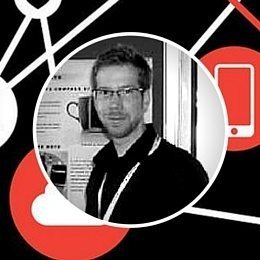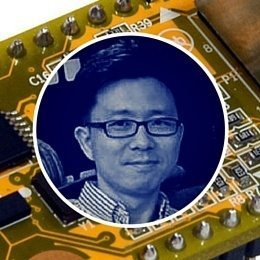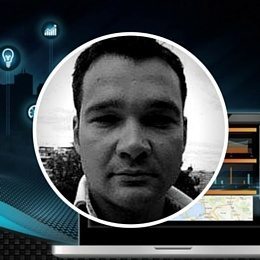Iñaki Vazquez the CEO of Symplio discusses a range of topics including his inspiration in bringing static objects to life, the Rymble’s current status and the shifting value propositions of traditional designs.
This is the 6th segment in the Postscapes Interview Series with some of the top people influencing the Internet of Things.
Interview:
Who are you, and what do you do?
I am Iñaki Vazquez, CEO of Symplio, a start-up focused supporting digital lifestyle through innovative Internet-connected consumer products. We work strongly on the “emotional factor” of this new generation of objects, that’s why we started by embracing social networks, trying to bring them to the real world. A couple of months ago we announced Rymble, our first step in the creation of more engaging and user-focused lifestyle objects.
I did my PhD on embedded intelligence and cooperation mechanisms for smart objects in 2007 (available here), and spent the last years as Research Leader of the Smart Objects group at the University of Deusto (Bilbao, Spain), where we had a great time exploring new concepts and developing interesting prototypes.
In late 2010 we started Symplio, and now I am more business-oriented, building a company that can learn from consumers and involve them at all the stages, from early prototype-development to product hacking and extensibility.
How do you view the term “Internet of Things”?
To be honest, it is a term too ambiguous that prompts for many interpretations, sometimes referring mainly to RFID/NFC, at other moments also including tablets and mobile phones. From a user’s perspective I like the concept of experiencing the Internet through physical objects, beyond computers or touch screens (except the object’s surface), that’s why I prefer to use the term “Internet-connected objects”.
New products are making extensive use of new materials and designs, but still the old value propositions remain. However, when you connect a physical product to the Internet you are integrating in the same entity an object and a set of services, and this opens the way for new possibilities.
As an example, an electronic book is fine, but it is still a tool for reading books. But when you add Internet connectivity, enabling users to share comments, additional material or references, it becomes a social experience, beyond reading a book. You shifted the value proposition of the product, and now new business models can emerge.
As it happened with the Internet in the mid-late 90s, I use to say that the Internet of Things is a jungle, with unexpected and dangerous challenges, but also with hidden treasures. Our company and many others in the field are like explorers, taking risks, venturing into the depths of the jungle, discovering new paths, and trying to find the treasure.
Where do you see the Internet of Things and its technologies creating the most impact?
In the short-term, IoT will transform businesses and cities into more intelligent nervous systems. It is very important to create architectures that can be easily extended with additional functionalities, facilitating third parties to create new services and applications
on the top of them. In the long-term, the most difficult and challenging thing is to achieve integration in the users’ everyday life. Just as it happened with the “traditional” Internet, widespread adoption takes place when technology disappears leading to a comfortable user experience.
From my point of view, the main technological challenges are related to energy management/power-harvesting, and autonomy/resilience, especially if we are creating a world with 50 billion connected devices by 2020 (as Cisco and Ericsson predict).
However, I am also particularly worried about human-related issues such as privacy control, the user perception and interaction mechanisms with this new wave of Internet-connected super-products, and the management of your personal time in a world where poorly designed products may demand your attention at all times.

What are you currently working on or are most excited about?
During the last months we have been working on Rymble a decorative + informative object connected to the user’s social networks, that works in the background of attention. Rymble’s look can be customized through skins, and uses Symplio’s platform to connect to any social network or topic (e.g. sports teams) in the Internet, becoming an emotional product that creates reflections of the Internet into the real world. Currently we are working hard on tuning Rymble for mass production after a successful market evaluation campaign. We are also developing some other alternative concepts to recreate manifestations of the Internet through smart materials that can be easily and seamlessly integrated into our lives.
Apart from our main focus, we are also helping other more traditional companies to migrate their “static” products towards new Internet-enabled value propositions, bringing typical Internet business models to other markets.
Shout-outs: Any sites/people/articles or books that have inspired you lately?
Disney films always feature objects coming to life, having a personality and helping the heroes to achieve their goal: they embrace the essence of what we try to do. Fortunately, this is a very active field with lots of great professionals trying to make this vision a reality. All the people listed in your ranking are actively contributing, but I was particularly influenced by the work of Rafi Haladjian (creator of Nabaztag, and now Sen.se), Adam Greenfield (with Everyware) Mike Kuniavsky (with Smart Things, and theSmart Furniture Manifesto) and Donald Norman (Emotional Design, andothers).
It is also great the media attention IoT is bringing during the last months thanks to Rob van Kranenburg from the IoT Council, Dom and Vlad fromWebOfThings.org and you guys from Postscapes, all actively supporting a community for people to meet and share ideas.
Thanks for taking the time to talk to us and we are excited to see what’s coming next from Rymble and the team at Symplio.





